The Masters: Why does the winner at Augusta get a Green Jacket?
Published: Last updated:
The winner of the year’s first golf Major receives the famous Green Jacket for victory at The Masters. But how did a blazer cut from an inexpensive wool-polyester mix become the world’s most coveted jacket?
In fashion circles, it ranks alongside flared trousers, bat wing shirts, and kipper ties, yet nothing comes close in golfing terms to the iconic Green Jacket handed to the winner of the Masters each April. As much a part of Augusta National Golf Club as pine trees and peach cobblers, this simple item is as synonymous with major championship golf as The Open’s silver Claret Jug.
THE MASTERS: What does the Masters champion win?
The idea of a members’ jacket was the brainchild of the great Bobby Jones. Born out of an Open-winning trip to Royal Liverpool in 1927, Jones was impressed by the red hunting jacket worn by former captains of the club. Not only did it look smart, it offered a type of gravitas he felt American golf lacked.
So when Augusta National opened in January 1933, Jones floated the idea to business partner Clifford Roberts. The only issue was the color. Red, yellow and even ‘Georgia peach’ were all considered but quickly dismissed. Then, while out walking Roberts’ eye was taken by the leaves underpinning the many azalea bushes found on the former Fruitland Nursery site. Known as verdant green, the choice was made and a legend was born.

Four years later in 1937, Roberts decreed that every member attending the Masters should wear his “Green Jacket” so that visitors could pick them out from the crowd and ask them for directions. Unsurprisingly, the idea of wearing a pure wool jacket in 90-degree heat met a lukewarm reception, but after a lightweight version was introduced in 1938, the idea stuck and endures to this day.
The first professional to receive one was Sam Snead in 1949. Accepting it from the hands of Jones himself, Snead must have had mixed feelings as he pulled on the size 40, Brooks Uniform Company jacket for the first time.
Bright green and made from an inexpensive wool polyester mix, it may have left Snead underwhelmed but fast forward 71 years and that single item regularly tops the most wanted list of every PGA Tour professional. Not that many Augusta National members, honorary or otherwise, have the opportunity of showing off the most famous jacket in sport.
Pantone 342
With more rules than a Buckingham Palace Tea Party, only first-time winners are allowed to remove it from club grounds, and then only for the first 12 months. After a year, each jacket is kept permanently in the Champions Locker room and only worn during Masters Week, strictly within the confines of Augusta National’s clubhouse. In a recent change, however, winners are now presented with a replica jacket they may keep.
Considering its vaunted reputation, you might imagine that modern-day Green Jackets are Armani-made and fitted with diamond-studded, gold buttons. But you would be wrong. Supplied in the main by the Hamilton Tailoring Company of Cincinnati since 1967 each single-breasted, center-vented blazer costs the remarkably modest sum of just $250.

Cut and stitched in Dublin, Georgia by Victor Forstmann Inc., each one is still made from a school uniform mix of wool and polyester. Lined with sheer Bemberg rayon, the buttons – three for each cuff and three larger ones on the actual jacket – are made of polished brass by Waterbury Companies Inc. of Connecticut.
Bearing the celebrated Augusta National logo, they match the one stitched onto the left-hand breast pocket before each jacket is finally delivered. As for the distinctive green color, it is somewhat unromantically listed as: ‘Pantone 342’.
For a long time, every new jacket had been cut from a single 500-yard roll of wool purchased back in 1990 by Ed Heimann, Chairman of Hamilton Tailoring. Estimated to make 200 jackets, the admission of female members in 2012 made a reorder necessary.
The question whether or not the first female members received a more feminine cut was met with a polite but firm, “No comment!” from Hamilton Tailoring – the same answer given by a Club spokesman when asked to confirm all the previous manufacturing details.
Perhaps the best-known “guideline infringement” involved three-time Masters champion Sir Nick Faldo who wore his during a number of high-profile TV chat show interviews after his first win in 1989. This was frowned upon but at least Faldo promised to bring his jacket back, unlike Seve Ballesteros, who flatly refused to return his in 2002 when asked by Chairman, Hootie Johnson.

Not that either man was the first to ‘accidentally’ spirit the jacket away from the club. In 1961, the first non-American winner of the Masters, Gary Player was telephoned in South Africa by Clifford Roberts who admonished him for not leaving it at Augusta. Unaware of his heinous crime the Black Knight mischievously replied: “Fine, Mr Roberts, if you want it, come and fetch it!”
Making Player promise not to wear it in public, Roberts made an exception, then introduced strict guidelines before the 1962 Masters to ensure that no more Green Jackets went astray.
An 800-pound gorilla
The same indignation was shown by Augusta National in 1994 when a genuine Green Jacket turned up in a Toronto thrift shop. Discovered by a Canadian journalist who immediately recognized the distinctive logo, he gladly met the $5 asking price. Resold in April 2017 by Florida-based Green Jacket Auctions, the $5 jacket went for $139,000.
This clearly piqued the interest of Augusta National, who having trademarked the phrase ‘Green Jacket’ in 2010, were now more protective of their property. A lawsuit filed in 2017 prevented the sale of a champion’s Green Jacket by Green Jacket Auctions. At the time, three known former champions’ jackets were up for sale online, one of them a Byron Nelson jacket owned by an Englishman.
Flexing some serious legal muscle, Augusta National successfully put a stop to that. “They’re an 800-pound gorilla,” one former legal opponent told Golf magazine. “They try to bully you.” Most recently, in February 2019, Augusta National ordered an annual golf tournament at Mullion GC in Devon to stop awarding its winner a green jacket as it breaches copyright.

“It’s true that Augusta National is protective of its Green Jackets but this was not always the case,” says Ryan Carey, President of Green Jacket Auctions. “The jackets weren’t nearly so tightly guarded back in the 1940s and 1950s. Then in the early 1960s the shutters came down.”
That’s understandable when you find that a standard members’ jacket can fetch thousands of dollars at auction – a jacket worn by Bobby Jones in 1937 sold for $310,700 in 2011. So what price any one of the six Green Jackets won by the great Jack Nicklaus? Curiously, not that much.
Despite winning the Masters six times, the Golden Bear never owned a Green Jacket until fairly recently. In one of the oddest stories to emerge from Augusta National in recent years, the player most associated with the Masters was ultimately forced to buy his own jacket 43 years after supposedly winning his first. “Everybody talks about the Green Jacket,” said Nicklaus, “but I never actually owned one until 1998.”
The problem began after he won his first Masters in 1963 as a chubby 23-year-old. Unable to calculate his exact size, officials handed Arnold Palmer a size 46 long to present. Draping it over his shoulders, it quickly became obvious how oversized it was. “They must have thought I was huge,” Nicklaus recalled years later. “It hung on me like an old blanket.”

Returning as defending champion 12 months later, no replacement had been ordered, so Jack was forced to borrow one from former New York Governor, Thomas E Dewey. Winning again in 1965 and 1966, Nicklaus gratefully borrowed the jacket twice more. With no Green Jacket other than the original 46 long hanging in his locker, he decided to tough it out. “Nobody ever spoke to me about it,” said Jack. “And I was never going to say anything.”
THE MASTERS: Full prize money breakdown
Nicklaus won his fourth Masters in 1972 and decided to take matters into his own hands. Dewey had died the year before and according to rumor had been buried in the much-used jacket. Having a sponsorship deal with Cincinnati-based clothing manufacturer Hart, Schaffner and Marx, he asked them to make him a Green Jacket of his own prior to the tournament. With nothing to go on except press photographs, they made a manful effort but still managed to get the color and cut totally wrong. Presented with the only replica Green Jacket copy in the Masters history, nobody even noticed.
The same bootleg was used again in 1975 after he captured his fifth title. As his career went into decline in the 1980s, Jack decided to keep the story under wraps. As age took its toll he preferred to borrow other members’ Green Jackets and it was a ‘loaner’ he wore on that historic afternoon in 1986, when the 46-year-old became the Masters oldest winner.
Still without a Green Jacket to call his own, Nicklaus finally summoned up the courage to approach Augusta National Chairman Jackson Stephens in 1997. “I told him the story and how I’ve never been given one I could wear,” said Jack.
Taken aback, Stephens ordered an instant visit to the Augusta pro shop where Jack would finally be measured for his own Green Jacket. Nicklaus respectfully declined. “It was such a great story,” he said. “I didn’t want to ruin it…”
SUBSCRIBE TO TODAY’S GOLFER: Print and Digital access, discounts and rewards!
About the Author

Rob specializes in the DP World Tour, PGA Tour, LIV Golf, and the Ryder Cup, spending large chunks of his days reading about, writing about, and watching the tours each month.
He’s passionate about the equipment used by professional golfers and is also a font of knowledge regarding golf balls, golf trolleys, and golf bags, testing thousands down the years.
You can email Rob or get in touch with him on X.
-
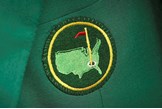 Why does The Masters winner receive a Green Jacket?
Why does The Masters winner receive a Green Jacket?
-
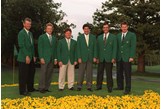 Plenty of European players are owners of Green Jackets.
Plenty of European players are owners of Green Jackets.
-
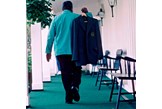 A Green Jacket is carried through Augusta National.
A Green Jacket is carried through Augusta National.
-
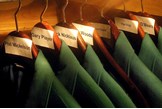 Lawrence Bennett was in charge of the Green Jacket closet.
Lawrence Bennett was in charge of the Green Jacket closet.
-
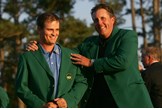 Phil Mickelson misses his first Masters in 28 years, but US Ryder Cup Captain Zach Johnson is in the field.
Phil Mickelson misses his first Masters in 28 years, but US Ryder Cup Captain Zach Johnson is in the field.
-
 Jack Nicklaus spent years without a Green Jacket that fitted appropriately!
Jack Nicklaus spent years without a Green Jacket that fitted appropriately!
